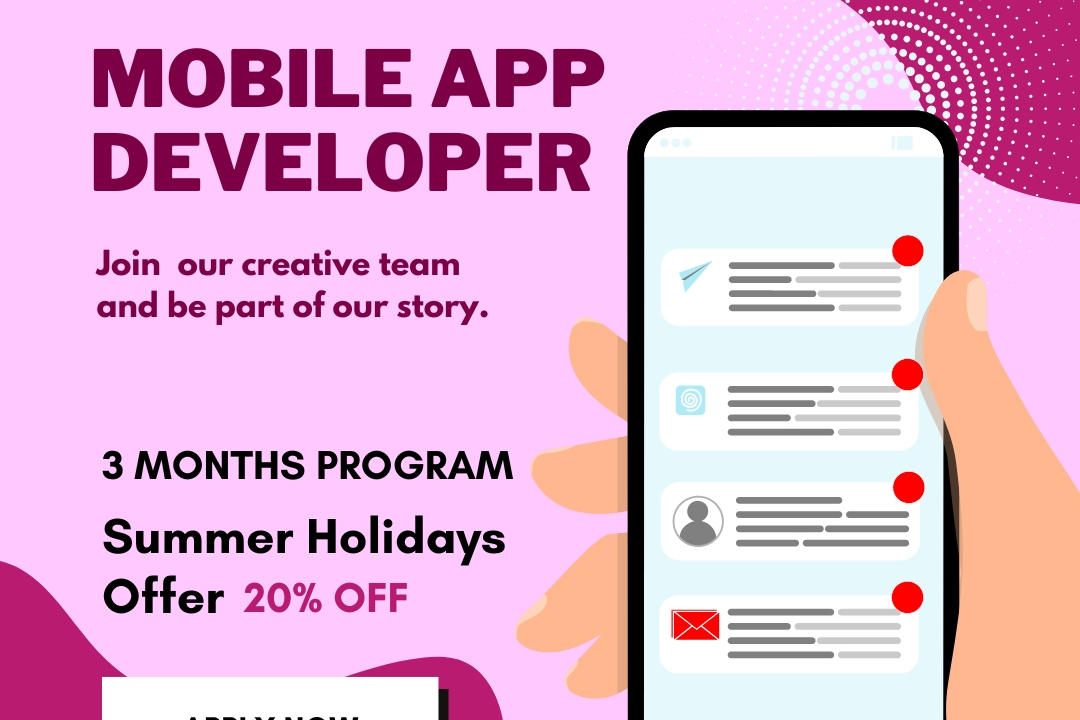Custom Views In Android
Creating Custom Views in Android Development
Custom Views In Android
Custom views in Android are user-defined components that extend the capabilities of standard views, allowing developers to create unique UI elements tailored to specific needs. By subclassing existing view classes (e.g., `View`, `TextView`, or `Button`), developers can override methods such as `onDraw()` and `onMeasure()` to control how the view is rendered and its dimensions. Custom attributes can be defined in XML via `attrs.xml`, enabling users to customize the view's appearance and behavior directly within layout files. This flexibility allows for the creation of complex interfaces and visually appealing designs that enhance user experience, all while maintaining performance and reusability.
To Download Our Brochure: https://www.justacademy.co/download-brochure-for-free
Message us for more information: +91 9987184296
1 - Definition of Custom Views: Custom Views are specialized view components in Android that allow developers to create unique UI elements by extending existing View classes or implementing interfaces.
2) Extending View Classes: To create a Custom View, developers typically extend the `View` class or its subclasses, such as `TextView`, `ImageView`, or `Button`.
3) Customization: Custom Views allow for extensive customization in appearance and behavior by overriding methods like `onDraw()`, `onMeasure()`, and `onLayout()`.
4) onDraw() Method: This method is where the drawing logic occurs. Developers can use the Canvas object to draw shapes, text, or images specific to their needs.
5) onMeasure() Method: This method determines the size of the view. It allows developers to define how wide and tall the view can be based on its content and layout parameters.
6) XML Attributes: Custom Views can obtain attributes from XML layouts, allowing for easy customization in layout files through custom attributes defined in `attrs.xml`.
7) Defining Attributes: Developers can define custom attributes in `res/values/attrs.xml`, specifying their types and default values, which can be accessed in the constructor.
8) Constructor Overloading: Custom Views often implement multiple constructors to handle different initialization scenarios, such as inflating from XML and creating instances programmatically.
9) Drawable Resources: Custom Views can use drawable resources to enhance their appearance, such as backgrounds, borders, or icons, loading them through the Context or Resources objects.
10) Handling Touch Events: Custom Views can intercept and respond to user interactions like taps and swipes by overriding methods such as `onTouchEvent()`.
11) Animation Support: Developers can implement animations in Custom Views using the `Animator` framework or property animations to enhance user experience.
12) Recycling: In scenarios like ListView or RecyclerView, Custom Views should be designed to efficiently handle resource allocation and recycling to maintain performance.
13) Accessibility Support: It is essential for Custom Views to support accessibility. Developers should use the Accessibility APIs to ensure that the views are navigable for all users.
14) Testing: Custom Views need to be thoroughly tested across multiple devices ensuring that they are responsive and render properly on different screen sizes and densities.
15) Best Practices: Following best practices such as keeping the view logic simple, avoiding heavy computations in the drawing methods, and leveraging hardware acceleration for performance is crucial.
16) Performance Implications: Developers should be mindful of the performance implications of Custom Views. Overdraw and expensive calculations should be minimized to ensure a smooth user experience.
17) Use Cases: Custom Views are commonly used to create unique controls, such as progress bars, sliders, or charts, which are not available in the standard Android widget library.
18) Dynamic Updates: Custom Views can be designed to handle dynamic data updates efficiently, ensuring that the user interface remains responsive to changes in data.
By covering these points, students will gain a comprehensive understanding of Custom Views in Android, including their creation, usage, and best practices. This knowledge is essential for developing unique and efficient user interfaces in Android applications.
Browse our course links : https://www.justacademy.co/all-courses
To Join our FREE DEMO Session: Click Here
Contact Us for more info:
PMP CERTIFICATION 35 HOURS TRAINING
best java training institutes in visakhapatnam
java in machine learning
best full stack developer course free
Flutter Training in Satna











